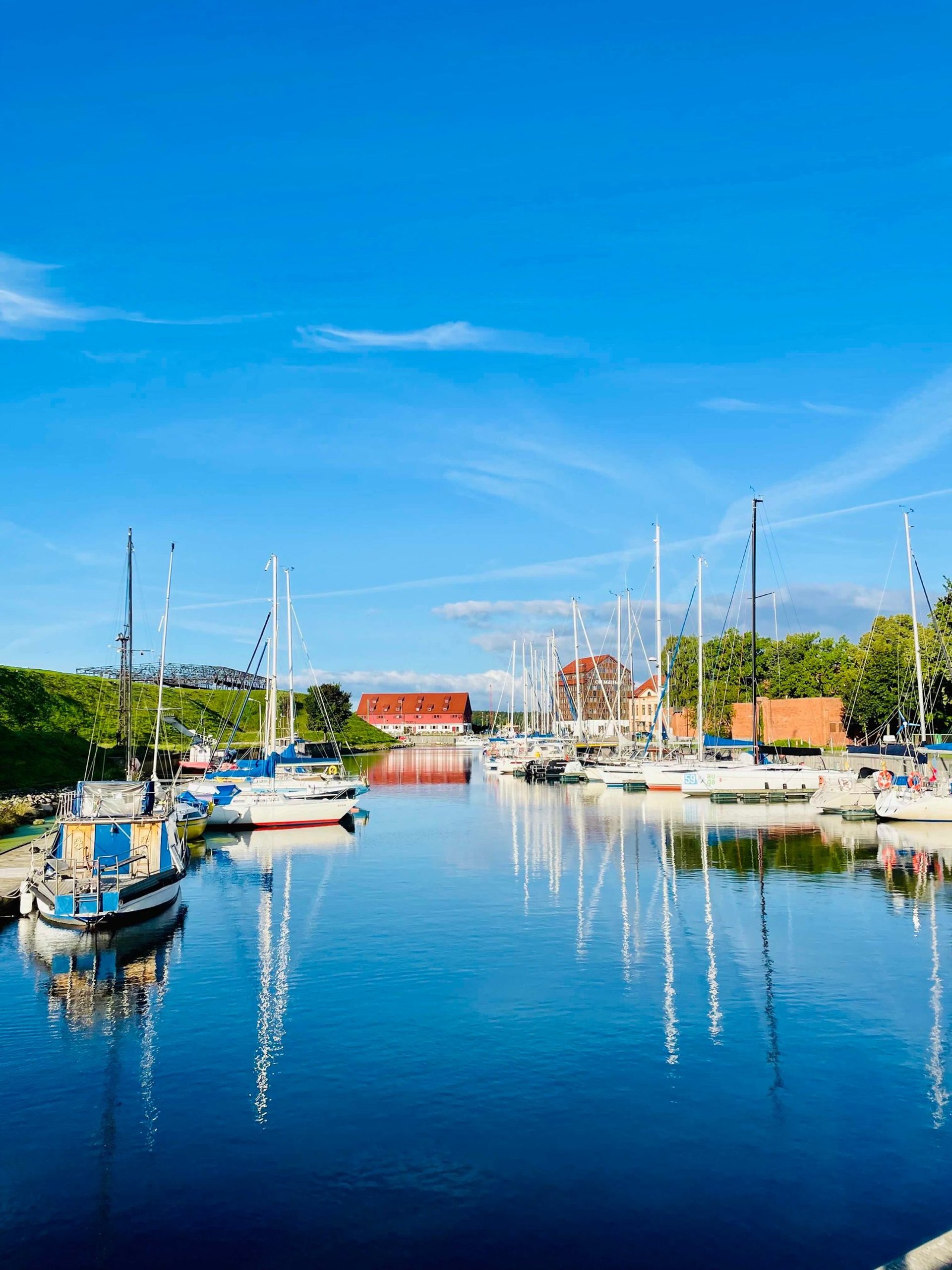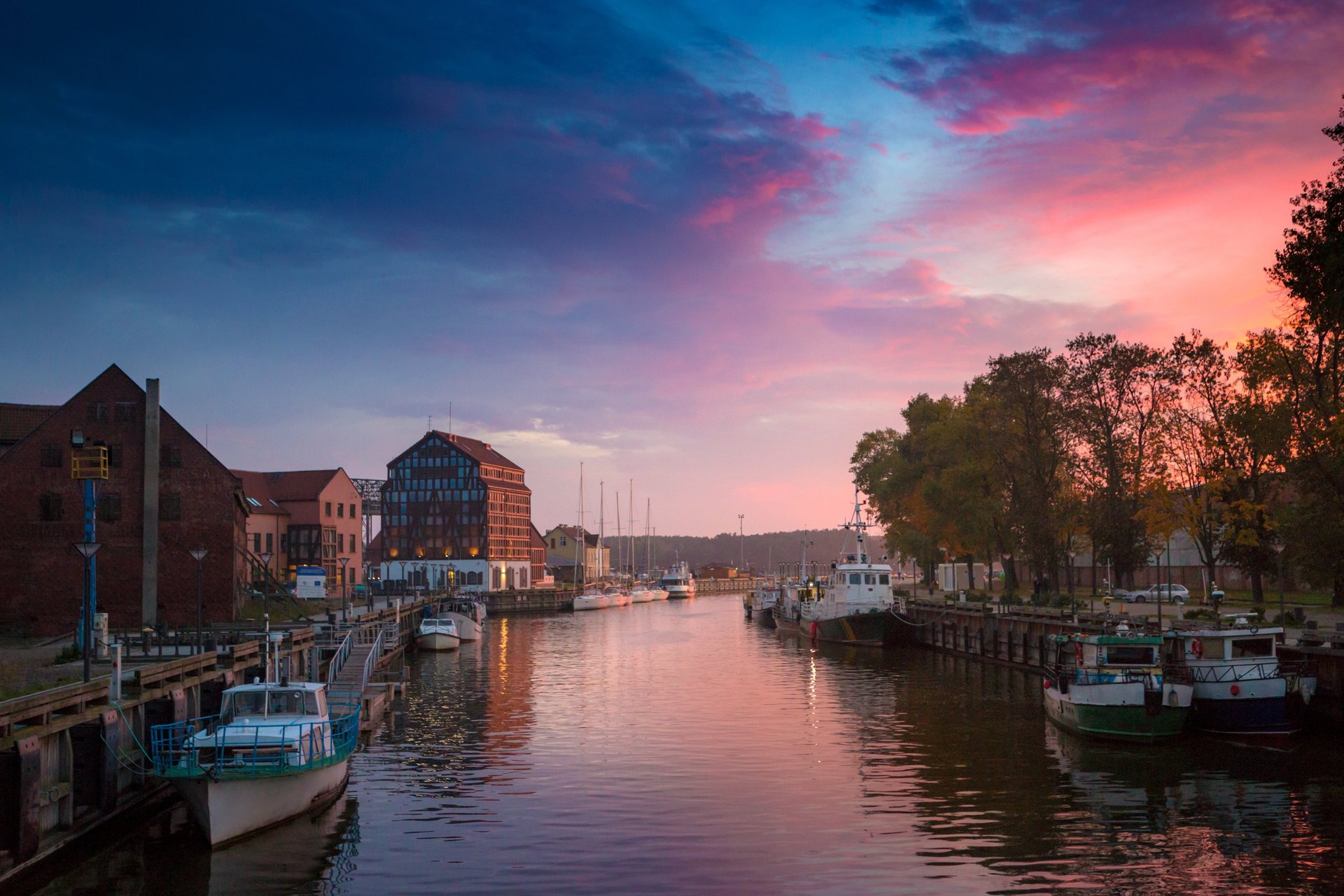
Klaipeda is the oldest town in Lithuania beginning in 13th century. It had a colourful history as the town was once part of Prussia, Germany, France, Sweden and Soviets. Now Klaipeda is the cultural and economical capital of the Western Lithuania with around 150,000 people.
Germany had made a great influence to the town. Its unique feature is the German built half-timbered houses and the rectangular layout of the streets where once bakers, shoemakers, blacksmiths used to live and ply their trades.
The heart of the old town is the Theatre Square with a Theatre building where Richard Wagener used to conduct in his young days. In front of the Theatre building stands a demure sculpture of Annchen from Tharau built in remembrance of the Memel born German poet Simon Dach.
Klaipeda is also famous for white sand beaches, parks and wild forests. Even the Prussian Queen Louise, whose family lived in Klaipeda in 1807 had a favourite relaxing retreat – the Klaipeda University Botanical gardens in Tauralaukis.
Klaipeda is great for recreation as there are many tracks for walking and cycling, a modern yachting club for sailing, diving and fishing clubs. Families always admire an Aquarium and a Dolphinarium, hosting shows of dolphins and sea lions.
Most importantly Klaipeda is the Lithuanian gateway to the world. As the only ice-free port, it was the main trading channel between the Eastern and Western Europe even in the 18th century.
Klaipeda is an attractive cruising destination. The summer months are filled with festivals starting with Street Music Day in May. The biggest draw has been the international Jazz Festival, which started right after Lithuanian independence. There is also the flamboyant five-day Sea Festival with carnivals, street fairs and music everywhere.
Klaipeda of today is truly a vibrant, bohemian city with a marine spirit in which to live and work.
Klaipeda - Sea port City
Museums in Klaipeda
Established in 1993 Blacksmith Museum provides a glimpse inside the world of the smithy and into the cultural past of the region. The exposition consists of the crosses, fences, gates and weathervanes which are unique to the city.
Address: Šaltkalvių str. 2
Blacksmith Museum (Kalvystės Muziejus)
Lithuanian Minor Historical Museum
In the museum you will find old maps, photographs, postcards and the city models. The ethnographic exhibits represent the region dwellers’ lifestyle, traditions, and the dramatic Lithuanian-German relations.
Address: Didžioji vandens str. 6
The Castle Museum is established in the remains of Klaipeda Castle. The exhibition of the museum represents the history of the Klaipeda castle as well as the Klaipeda city.
Address: Priešpilio str. 4
Klaipeda Castle Museum
Museum represents WWII in Klaipėda city and reveals how city and its history was shaped by Nazi Germany and Soviet Union.
Address: Priešpilio str. 4
Museum 39/45
Located inside the complex of Castle museum, this museum represents everyday life and culture of the city's residents from the 13th to the 18th centuries.
Address: Priešpilio str. 4
Exposition "Kurtina"
The museum's exhibitions encompass Lithuania's maritime history and the diverse marine life of the Baltic Sea. Highlights include an aquarium with an 18-meter acrylic tunnel, a dolphinarium, and displays of traditional fishing vessels.
Address: Smiltynės str. 3
Lithuanian Sea Museum

© 2025. All rights reserved.
Personalized shore excursions in port of Klaipeda.
Meja Travel
Contact US:
